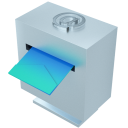一、作用
创建一个新的Tensor,该Tensor的type和device都和原有Tensor一致,且无内容。
二、使用方法
如果随机定义一个大小的Tensor,则新的Tensor有两种创建方法,如下:
inputs = torch.randn(m, n) new_inputs = inputs.new()new_inputs = torch.Tensor.new(inputs)三、具体代码
import torch rectangle_height = 1rectangle_width = 4inputs = torch.randn(rectangle_height, rectangle_width)for i in range(rectangle_height): for j in range(rectangle_width): inputs[i][j] = (i + 1) * (j + 1)print("inputs:", inputs)new_inputs = inputs.new()print("new_inputs:", new_inputs)# Constructs a new tensor of the same data type as self tensor.print(new_inputs.type(), inputs.type())print('') inputs = inputs.squeeze(dim=0)print("inputs:", inputs)# new_inputs = inputs.new()new_inputs = torch.Tensor.new(inputs)print("new_inputs:", new_inputs)# Constructs a new tensor of the same data type as self tensor.print(new_inputs.type(), inputs.type())if torch.cuda.is_available(): device = torch.device("cuda") inputs, new_inputs = inputs.to(device), new_inputs.to(device) print(inputs.device, new_inputs.device)结果如下:
可以看到不论inputs是多少维的,新建的new_inputs的type和device都与inputs保持一致
inputs: tensor([[1., 2., 3., 4.]])new_inputs: tensor([])torch.FloatTensor torch.FloatTensor inputs: tensor([1., 2., 3., 4.])new_inputs: tensor([])torch.FloatTensor torch.FloatTensorcuda:0 cuda:0四、实际应用(添加噪声)
可以对Tensor添加噪声,添加如下代码即可实现:
noise = inputs.data.new(inputs.size()).normal_(0,0.01)print(noise)结果如下:
tensor([ 0.0062, 0.0137, -0.0209, 0.0072], device='cuda:0')
以上这篇Pytorch中.new()的作用详解就是小编分享给大家的全部内容了,希望能给大家一个参考,也希望大家多多支持。








































 热门文章
热门文章





